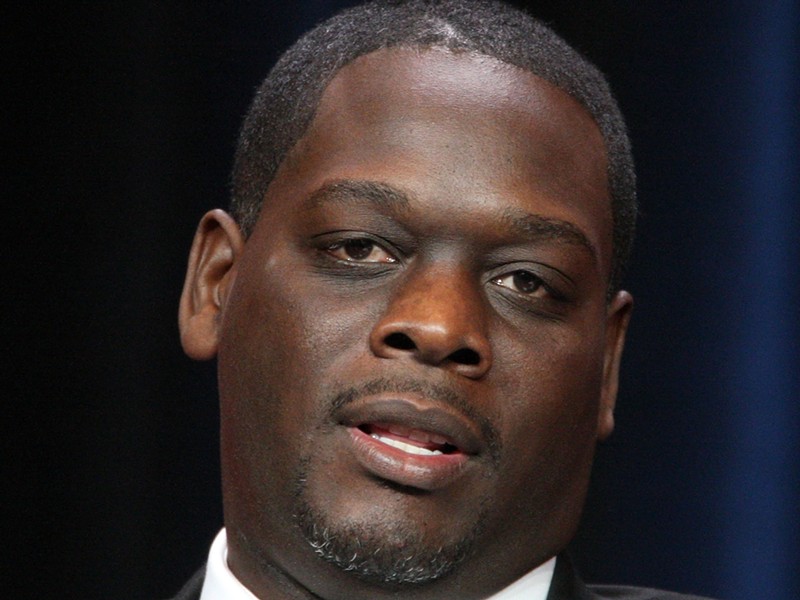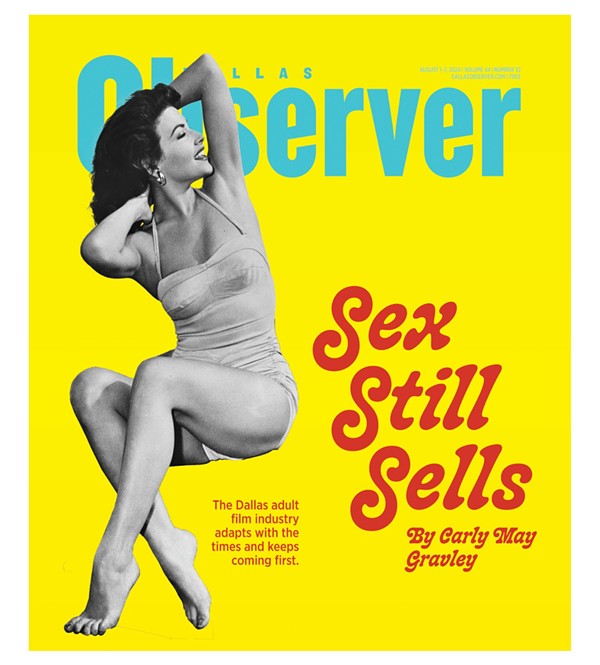In the end, as stories of scandals mounted and a battle over control of the Dallas County Democratic Party turned ugly, it became easy to overlook the outsized role former Dallas County District Attorney Craig Watkins played in making the justice system better here and across the country.
He was a revolutionary, and if ever a man deserved a statue honoring his public service, it’s Craig Watkins, who died last week at age 56. And we know just the place. More on that in a bit.
We get that this might sound a bit hypocritical coming from the Dallas Observer. After all, we joined other media outlets in sipping from the cup of schadenfreude Watkins handed us as his political career and reputation were battered by a series of missteps and scandals. We wrote about his troubled personal finances. We wrote about investigations into his use of his office’s forfeiture funds, including the $50,000 in seized money paid to settle a claim after he rear-ended a car while driving an SUV, also seized through civil forfeiture. We covered his effort to become a powerbroker in the Dallas County Democratic Party by lining up a slate of challengers to sitting Democratic judges and the party chair.
And we reported about a contempt charge Watkins faced after he brought a criminal case against Al Hill III, accusing him of faking a loan document. As former Observer columnist Jim Schutze wrote in 2013, “Hill brought charges against Watkins for faking up the charges against him as a favor to Lisa Blue, a rich lawyer, who was trying to get money out of Hill for fees. A judge asked Watkins under oath if that's what he did — brought charges against the rich guy to help the rich lawyer get money out of him. Watkins refused to answer.”
The weight of all this reporting, by us and others, would eventually contribute to Watkins’ becoming the only Democrat in a countywide race to lose a bid for re-election in 2014. They were all legitimate stories, but they were small potatoes compared with Watkins’ decision in 2007 to create the first Conviction Integrity Unit in the nation, one devoted to ferreting out cases of wrongful convictions. Criminal defense lawyer Gary Udashen, former president and current board member of the Innocence Project of Texas, describes Watkins’ decision as a watershed moment in how prosecutors everywhere approach their work.
“He demonstrated you can be a prosecutor … and at the same time seek justice,” Udashen says. Watkins was the “first person as a DA anywhere who put that aspect of the job into effect,” he says, and that attitude has spread nationwide.
The fact that the first elected black district attorney in Texas did this in Dallas County, which had a reputation for hard-ass prosecutors willing to tilt the scales against Black defendants and to defend dubious convictions at any cost, gave Watkins’ move extra weight. Now, Udashen points out, urban counties across Texas and the U.S. have their own, similar units.
Equally important, attitudes have changed. Prosecutors who once routinely fought calls from defense lawyers to re-examine DNA evidence are now more committed to “conviction integrity,” or making sure that those held behind bars deserve to be there. “When he did it, it was brave,” Udashen says of Watkins. (It helped that Dallas County had a policy of preserving evidence post-conviction. During Watkins’ tenure, that led to around two dozen exonerations, according to The Dallas Morning News.)
Russell Wilson II, a Dallas attorney Watkins picked to work on the unit in 2011, helped secure the exonerations of 13 men during his time there. He says the unit faced criticism at the outset.
“This wasn’t always something everyone agreed on,” Wilson says. “There was heavy criticism from political opponents and other people who didn't want their prior work criticized. I think today the CIU is widely accepted and not subject to the same types of criticisms you would have received in years past, but early on, there was intense criticism and pushback from what I’ll call stakeholders, but people have come around."
Watkins' legacy goes beyond clearing the innocent, Wilson says.
“The lessons of the CIU have translated to the front lines so that no prosecutor would set out to convict the wrong person, or to rely on junk science evidence,” Wilson says. “Nowadays, the overwhelming majority of prosecutors are utilizing these lessons to ensure accuracy in their convictions and prosecutions. You don't necessarily see as many people exonerated now, but you have seen a wave of policy changes.”
The effect has filtered down to juries, Udashen says. Jurors are often more skeptical when it comes to weighing eyewitness and expert testimony and more aware that prosecutors can make mistakes.
None of this praise for Watkins is meant to overlook the problems that arose during his time as DA, but we all have feet of clay: Let’s not bury the good Watkins did with his bones. Nor do we mean to give short shrift to lawyers like Udashen and Wilson and countless other attorneys, law students and academics who continue to fight on behalf of the wrongly convicted. That work deserves honor, and we’re serious when we say that a statue of Craig Watkins would be a grand way to celebrate both his and their legacy.
As for where this statue might be erected, our vote goes to Oak Lawn Park. Formerly known as Lee Park, it was once home to a huge sculpture honoring Confederate Gen. Robert E. Lee until the city of Dallas wised up in 2017, had the statue removed and renamed the park. That means there’s space there now that would be perfect for a statue of Watkins. Something life-size in bronze seems appropriate, maybe with the words, “Craig Watkins: He set the innocent free.”

Audio By Carbonatix
[
{
"name": "Air - MediumRectangle - Inline Content - Mobile Display Size",
"component": "18855504",
"insertPoint": "2",
"requiredCountToDisplay": "2",
"watchElement": ".fdn-content-body",
"astAdList": [
{
"adType": "rectangle",
"displayTargets": "mobile"
}
]
},{
"name": "Editor Picks",
"component": "17105533",
"insertPoint": "4",
"requiredCountToDisplay": "1",
"watchElement": ".fdn-content-body",
"astAdList": [
{
"adType": "rectangle",
"displayTargets": "desktop|tablet"
},{
"adType": "rectangle",
"displayTargets": "desktop|tablet|mobile"
}
]
},{
"name": "Inline Links",
"component": "18349797",
"insertPoint": "8th",
"startingPoint": 8,
"requiredCountToDisplay": "7",
"maxInsertions": 25
},{
"name": "Air - MediumRectangle - Combo - Inline Content",
"component": "17105532",
"insertPoint": "8th",
"startingPoint": 8,
"requiredCountToDisplay": "7",
"maxInsertions": 25,
"watchElement": ".fdn-content-body",
"astAdList": [
{
"adType": "rectangle",
"displayTargets": "desktop|tablet"
},{
"adType": "rectangle",
"displayTargets": "desktop|tablet|mobile"
}
]
},{
"name": "Inline Links",
"component": "18349797",
"insertPoint": "8th",
"startingPoint": 12,
"requiredCountToDisplay": "11",
"maxInsertions": 25
},{
"name": "Air - Leaderboard Tower - Combo - Inline Content",
"component": "17105535",
"insertPoint": "8th",
"startingPoint": 12,
"requiredCountToDisplay": "11",
"maxInsertions": 25,
"watchElement": ".fdn-content-body",
"astAdList": [
{
"adType": "leaderboardInlineContent",
"displayTargets": "desktop|tablet"
},{
"adType": "tower",
"displayTargets": "mobile"
}
]
}
]












